Hopefully, I will be able to explain my question well.
I am working on Nonlinear model predictive control implementation.
I have got 3 files: 1). a simulink slx file which is basically a nonlinear pendulum model. 2). A function file, to get the cost function from the simulink model. 3). MPC code.
code snippet of cost function
**simOut=sim('NonlinearPendulum','StopTime', num2str(Np*Ts));**
%Linearly interpolates X to obtain sampled output states at time instants.
T=simOut.get('Tsim');
X=simOut.get('xsim');
xt=interp1(T,X,linspace(0,Np*Ts,Np+1))';
U=U(1:Nu);
%Quadratic cost function
R=0.01;
J=sum(sum((xt-repmat(r,[1 Np+1])).*(xt-repmat(r,[1 Np+1]))))+R*(U-ur)*...
(U-ur)';
Now I take this cost function and optimize it using fmincon to generate a sequence of inputs to be applied to the model, using my MPC code. A code snippet of my MPC code.
%Constraints -1<=u(t)<=1;
Acons=[eye(Nu,Nu);-eye(Nu,Nu)];
Bcons=[ones(Nu,1);ones(Nu,1)];
options = optimoptions(@fmincon,'Algorithm','active-set','MaxIter',100);
warning off
for a1=1:nf
X=[]; %Prediction output
T=[]; %Prediction time
Xsam=[];
Tsam=[];
%Nonlinear MPC controller
Ubreak=linspace(0,(Np-1)*Ts,Np); %Break points for 1D lookup, used to avoid
% several calls/compilations of simulink model in fmincon.
**J=@(v) pendulumCostFunction(v,x0,ur,r(:,a1),Np,Nu,Ts);**
U=fmincon(J,U0,Acons,Bcons,[],[],[],[],[],options);
%U=fmincon(J,U0,Acons,Bcons);
U0=U;
UUsam=[UUsam;U(1)];%Apply only the first selected input
%Apply the selected input to plant.
Ubreak=[0 Ts]; %Break points for 1D lookup
U=[UUsam(end) UUsam(end)];
**simOut=sim('NonlinearPendulum','StopTime', num2str(Ts));**
In both the codes, I have marked the times we call our simulink model. Now, issue is that to run this whole simulation for just 5 seconds it takes around 7-8 minutes on my windows machine, MATLAB R2014B. Is there a way to optimize this? As, I am planning to extend this algorithm to 9th order system unlike 2nd order pendulum model.
If, anyone has suggestion on using simulink coder to generate C code: I have tried that, and the problem I face is that I don't know what to do with the several files generated. Please be as detailed as possible.

